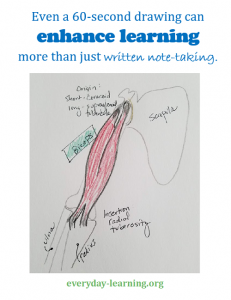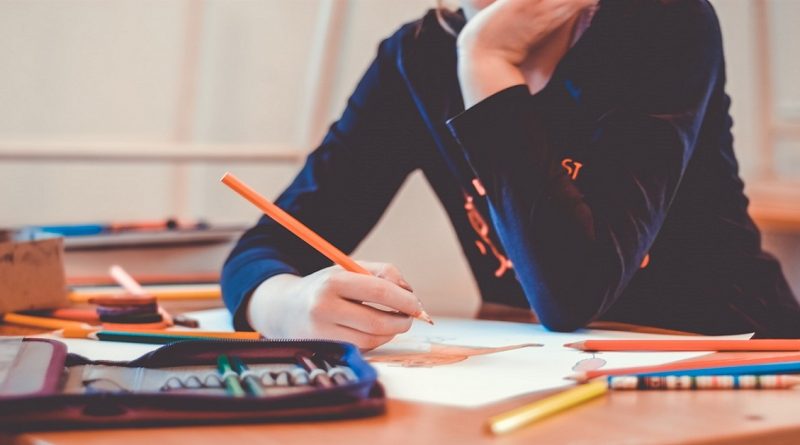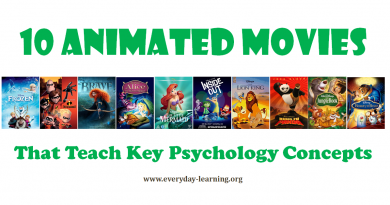Drawing to Remember
True Story: I recently went back to school for massage therapy because my spouse has chronic pain issues. I was dismayed to find out that I would have one semester (basically 14 weeks) to learn 206 bones in the body and 50+ individual muscles, as well as their origin and insertion points. It had been a minute (well, more like 30) since high school and I never actually took an anatomy class before. Needless to say, I panicked.
 Quick rote learning was never my strong suit. Despite having a well-illustrated textbook, I got out a sketchbook and colored pencils and proceeded to draw my way through the semester. What I thought was going to be a difficult task wound up being surprisingly easy.
Quick rote learning was never my strong suit. Despite having a well-illustrated textbook, I got out a sketchbook and colored pencils and proceeded to draw my way through the semester. What I thought was going to be a difficult task wound up being surprisingly easy.
What I didn’t realize was that drawing has been scientifically shown to have a “surprisingly powerful influence on memory”. In fact, Canadian researchers have shown that drawing helps a person remember information better than:
- Semantic elaboration (or talking about a fact and connecting it with other information we already know)
- Visualizing facts
- Writing notes
- Looking at pictures
Interestingly, studies have shown the drawing effect helped people to remember not just a list of words, but bigger ideas and concepts, like: What is an isotope.
What Kind of Drawing Helps You Remember?
Researchers found that neither the amount of time spent drawing a picture – or even the quality of the picture – mattered. In one study, people were given just 4-seconds to draw a picture of a word and they still remembered it better than just writing the word down. In a different study with dementia patients, the drawings were little more than scribbles on the paper, but the older adults who drew were still able to remember more than those who wrote words down, instead.
While the whole process of how drawing leads to better retention is not entirely understood, research seems to suggest there is a 3-part drawing process:
- Tracing over an existing picture
- Drawing the picture independently
- Drawing the picture without looking at the paper
Yeah, I know, that’s an awful lot of time spent doodling and I probably wouldn’t implement it on a regular basis, but there’s certain topics that may warrant this kind of learning time investment. For example, learning the alphabet and phonics would definitely benefit from this type of deep learning. Or, when you have a big data dump of information that needs to be learned in a short period of time – kind of like my recent semester-long anatomy class.
Drawing won’t make your kiddo magically smarter, but using this memory principle with writing-averse kids who have trouble with note-taking may help their learning and achievement improve.




